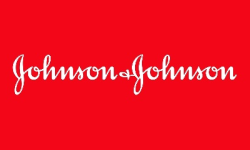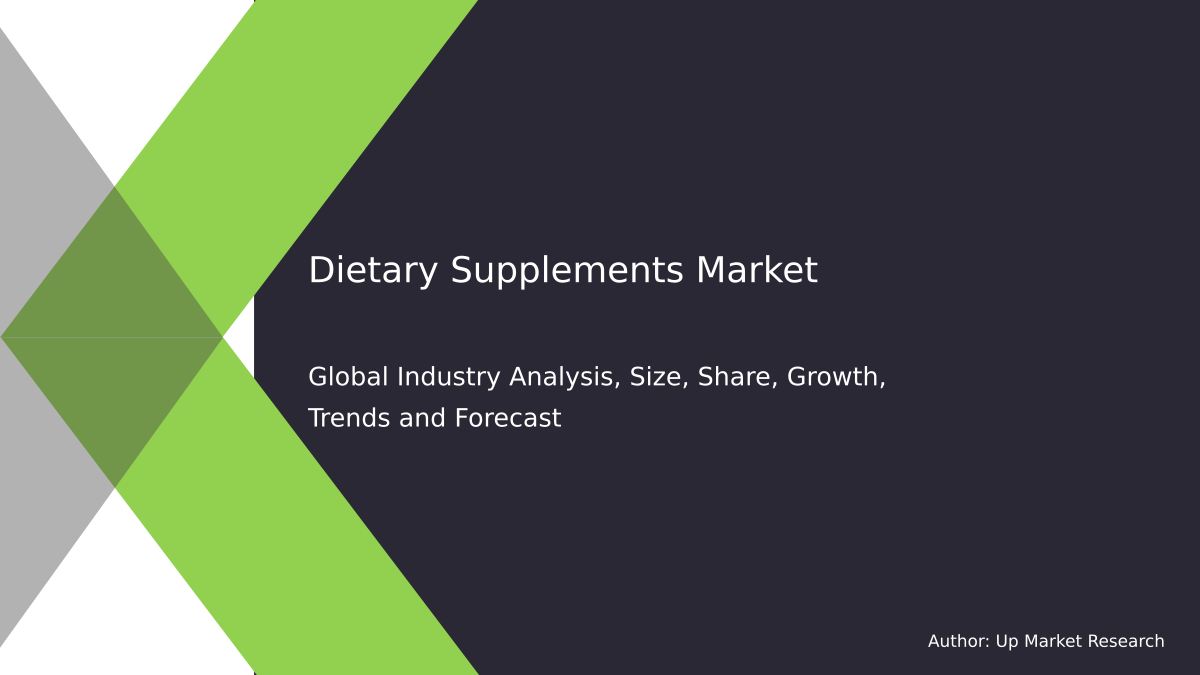
Global Food Thickeners Market by Source (Animal, Plant), by Application (Bakery, Confectionery), by Type (Protein, Hydrocolloids, Starch) and Region (North America, Latin America, Europe, Asia Pacific and Middle East & Africa), Forecast To 2028
Summary of the Report
Global food thickeners market was valued at USD 13.1 billion in 2019. It is projected to grow at 6.0% compounded annual growth rate between 2020 and 2027. The growing use of food thickeners in food and beverage applications, as well as rising consumer awareness about health and wellness, is the driving force behind this increase in demand.
Market growth will be positively impacted by factors such as product innovation, consumer preference for high-quality products and government food regulations. The forecast period will see an increase in demand due to favorable government regulations that support the growth of the food and beverage industry.
Numerous governmental agencies and organizations have implemented programs to promote healthy lifestyles. These programs include the introduction innovative products to reduce cholesterol, diabetes, and obesity. This will increase industry demand. The strong growth of the food- and beverage industry combined with a large consumer base is expected to increase the product's consumption over the forecast period. The market will also benefit from rising disposable income and changing lifestyles due to rapid urbanization.
Starch, hydrocolloids and proteins are used in baking, where they are used primarily as thickening, stabilizing and gelling agents. The product will also be in high demand due to increased demand for nutritional foods, ready-to-eat snacks and protein-rich products.
Market growth is expected to be boosted by rising demand for non-alcoholic beverages, such as fruit juices, energy drinks, and other non-alcoholic beverages. This market is highly competitive, with major players like Cargill Inc. and CP Kelco having large production volumes. These big players compete on the basis formulation blends and customization services to cater to a wider consumer base.
Type Insights
In 2019, hydrocolloid was responsible for 41.0% of global revenue. Hydrocolloids are used to thicken food. They include alginate and pectin. Hydrocolloids are stable under low pH, making them fiber rich and a great choice for the food & drink industry.
Hydrocolloids are widely utilized as food additives or thickeners. They are used for example as a sugar substitute for whipped creams & cookies, a wheat flour substitute for cookies, coating material for nuts & dried fish and food stabilizers in whippedcream, bulking agent for ice cream and yogurt and as starch dispersion for rice.
The starch market for food thickeners is estimated to have grown to more than USD3.2 billion in 2019. It will grow at a 5.5% CAGR between 2020 and 2027. Over the forecast period, factors such as stability, high viscosity and low cost will drive starch's use as a food thickener. Product demand will also be driven by the growing demand for gluten-free products.
Tapioca and wheat are the main sources of starch. Because of its low price, availability and ability to add thick base texture to soups and sauces, starch is widely used. It is also very flavorless, even when it is used at a concentration of 2-5 percent. It improves the texture and mouthfeel of soups, gravies, and sauces. These factors will increase the demand for food thickeners over the forecast period.
Source Insights
The market leader in food thickeners made from plant-based ingredients accounted for over 66.0% of global revenue in 2019. Plant-based products are most commonly used in bakery, confectionery and ready-to-eat meals. This can be attributed to their high efficacy as well as competitive pricing. Tapioca starch, tapioca flour, xanthan gum and rice flour are some of the most popular plant-based food thickeners.
Due to the growing trend towards veganism and vegetarianism, food thickeners made from plants are highly sustainable and in high demand by consumers. This is especially true for food products like bakery, confectionery and processed foods. This segment is expected to grow due to the easy availability of raw materials and the increasing popularity of the products among consumers.
In 2019, the animal segment was worth more than USD2.8 billion. It is projected to grow at a 5.8% CAGR during the period 2020-2027. Products derived from animal sources include gelatin, blood albumin and collagen. It is used in many products such as cookies, cakes, and candies as a coagulating agent. It can also be used to clear wine. It can hold up to four times its moisture making it an excellent thickener for sauces and custards.
In cheese making and medicine, blood albumin can be taken from any animal that has been slaughtered. Because of their low cost and low levels of cholesterol, blood proteins can be used to replace eggs. When added to an aqueous solution, thickening agents increase viscosity and do not alter properties like taste, texture, or flavor. They also improve the stability and body of the mixture, as well as improving the suspension of other ingredients.
Application Insights
Bakery accounts for more than 24% of the market for food thickeners. This segment is expected to maintain its dominance during the forecast period. Food thickeners will be driven by factors such as the rising demand for natural and organic baked goods, and the trend towards healthy snacks.
The market for food thickeners is expected to grow due to increasing consumer awareness towards products with traditional and exotic tastes. The combination of rising disposable incomes and changing lifestyles resulting from rapid urbanization has led to a shift towards food consumption, which will in turn drive demand for the market over the forecast period.
To meet changing consumer tastes, manufacturers are expanding their product lines by adding exotic flavors, functional ingredients and organic herbal fillings to their product formulations. These factors will drive confectionery demand and increase the need for confectionery products over the forecast period.
Sauces and dips are made with food thickeners. They give sauces their distinctive creamy texture and flavor. The rise in demand of processed foods products has led to a surge in the demand for sauces, dressings, and other condiments. This should lead to an increase in food thickeners demand over the forecast period.
Regional Insights
North America was the dominant market, with a share exceeding 38.0% in 2019. This is due to the significant demand from different industries in the U.S. and Canada. North America's market is driven mainly by the developed food and beverage industries in the U.S.A. and Canada. There are many multinational food processing and manufacturing companies that benefit the market, which in turn leads to increased demand.
Since recent years, North America has seen an increase in demand for pastries, muffins and cupcakes. Different thickeners are being used by players in the confectionery and bakery industry to bring innovation to their products. The region is also seeing a rise in demand for confectionery and bakery products.
Due to Europe's strong bakery and confectionery industries, as well as the increasing consumer demand, the demand for food thickeners is expected to rise. The market is expected to grow due to rising demand for packaged juices, energy drinks, and other beverages.
Exports from various European food thickener firms include value-added products, including mixtures of thickeners and flavoring ingredients. Exporters tend to be concentrated in Western Europe, while manufacturers are expanding their business in Eastern Europe.
Market Share Insights & Key Companies
Due to the size of the food industry, the industry is highly competitive. Because they can offer customized, cheap products that meet the needs of their customers, major players in the food thickeners market are facing fierce competition from smaller and local players. These players are highly visible in certain areas but face challenges due to irregular demand.
To gain an edge over your competitors, product differentiation is one key strategy. There are many products available in the industry. It is difficult to differentiate products because most of these products are used in the same applications. A few players, such as Ingredion Incorporated and ADM, have managed to achieve product differentiation in this market. The market leader in food thickeners is:
-
Cargill, Inc.
-
Archer Daniels Midland Company
-
DuPont De Nemours, Inc.
-
Tate & Lyle PLC
-
CP Kelco
-
Kerry Inc.
-
Ingredion Incorporated
-
Ashland
-
TIC Gums, Inc.
-
FDL Limited
-
Naturex S.A.
-
Medline Industries, Inc.
-
Darling Ingredients Inc.
Up Market Research published a new report titled “Food Thickeners Market research report which is segmented by Source (Animal, Plant), by Application (Bakery, Confectionery), by Type (Protein, Hydrocolloids, Starch), By Players/Companies Medline Industries Inc, CP Kelco, Naturex SA, Ashland, Kerry Inc, Tate & Lyle PLC, FDL Limited, Archer Daniels Midland Company, Darling Ingredients Inc, DuPont De Nemours Inc, TIC Gums Inc, Cargill Inc, Ingredion Incorporated”. As per the study the market is expected to grow at a CAGR of XX% in the forecast period.
Report Scope
| Report Attributes | Report Details |
| Report Title | Food Thickeners Market Research Report |
| By Source | Animal, Plant |
| By Application | Bakery, Confectionery |
| By Type | Protein, Hydrocolloids, Starch |
| By Companies | Medline Industries Inc, CP Kelco, Naturex SA, Ashland, Kerry Inc, Tate & Lyle PLC, FDL Limited, Archer Daniels Midland Company, Darling Ingredients Inc, DuPont De Nemours Inc, TIC Gums Inc, Cargill Inc, Ingredion Incorporated |
| Regions Covered | North America, Europe, APAC, Latin America, MEA |
| Base Year | 2020 |
| Historical Year | 2018 to 2019 (Data from 2010 can be provided as per availability) |
| Forecast Year | 2028 |
| Number of Pages | 207 |
| Number of Tables & Figures | 145 |
| Customization Available | Yes, the report can be customized as per your need. |
The report covers comprehensive data on emerging trends, market drivers, growth opportunities, and restraints that can change the market dynamics of the industry. It provides an in-depth analysis of the market segments which include products, applications, and competitor analysis.

Global Food Thickeners Market Report Segments:
The market is segmented by Source (Animal, Plant), by Application (Bakery, Confectionery), by Type (Protein, Hydrocolloids, Starch).
Food Thickeners Market research report delivers a close watch on leading competitors with strategic analysis, micro and macro market trend and scenarios, pricing analysis and a holistic overview of the market situations in the forecast period. It is a professional and a detailed report focusing on primary and secondary drivers, market share, leading segments and geographical analysis. Further, key players, major collaborations, merger & acquisitions along with trending innovation and business policies are reviewed in the report.
Key Benefits for Industry Participants & Stakeholders:
- Industry drivers, restraints, and opportunities covered in the study
- Neutral perspective on the market performance
- Recent industry trends and developments
- Competitive landscape & strategies of key players
- Potential & niche segments and regions exhibiting promising growth covered
- Historical, current, and projected market size, in terms of value
- In-depth analysis of the Food Thickeners Market
Overview of the regional outlook of the Food Thickeners Market:
Based on region, the market is segmented into North America, Europe, Asia Pacific, Latin America and Middle East & Africa (MEA). North America region is further bifurcated into countries such as U.S., and Canada. The Europe region is further categorized into U.K., France, Germany, Italy, Spain, Russia, and Rest of Europe. Asia Pacific is further segmented into China, Japan, South Korea, India, Australia, South East Asia, and Rest of Asia Pacific. Latin America region is further segmented into Brazil, Mexico, and Rest of Latin America, and the MEA region is further divided into GCC, Turkey, South Africa, and Rest of MEA.

Highlights of The Food Thickeners Market Report:
- The market structure and projections for the coming years.
- Drivers, restraints, opportunities, and current trends of Food Thickeners Market.
- Historical data and forecast.
- Estimations for the forecast period 2028.
- Developments and trends in the market.
1. Animal
2. Plant
7. By Application:1. Bakery
2. Confectionery
8. By Type:1. Protein
2. Hydrocolloids
3. Starch
- Market scenario by region, sub-region, and country.
- Market share of the market players, company profiles, product specifications, SWOT analysis, and competitive landscape.
- Analysis regarding upstream raw materials, downstream demand, and current market dynamics.
- Government Policies, Macro & Micro economic factors are also included in the report.
We have studied the Food Thickeners Market in 360 degrees via. both primary & secondary research methodologies. This helped us in building an understanding of the current market dynamics, supply-demand gap, pricing trends, product preferences, consumer patterns & so on. The findings were further validated through primary research with industry experts & opinion leaders across countries. The data is further compiled & validated through various market estimation & data validation methodologies. Further, we also have our in-house data forecasting model to predict market growth up to 2028.
How you may use our products:
- Correctly Positioning New Products
- Market Entry Strategies
- Business Expansion Strategies
- Consumer Insights
- Understanding Competition Scenario
- Product & Brand Management
- Channel & Customer Management
- Identifying Appropriate Advertising Appeals

Reasons to Purchase the Food Thickeners Market Report:
- The report includes a plethora of information such as market dynamics scenario and opportunities during the forecast period
- Segments and sub-segments include quantitative, qualitative, value (USD Million,) and volume (Units Million) data.
- Regional, sub-regional, and country level data includes the demand and supply forces along with their influence on the market.
- The competitive landscape comprises share of key players, new developments, and strategies in the last three years.
- Comprehensive companies offering products, relevant financial information, recent developments, SWOT analysis, and strategies by these players.
Chapter 2 Assumptions and Acronyms Used
Chapter 3 Research Methodology
Chapter 4 Food Thickeners Market Overview
4.1 Introduction
4.1.1 Market Taxonomy
4.1.2 Market Definition
4.1.3 Macro-Economic Factors Impacting the Market Growth
4.2 Food Thickeners Market Dynamics
4.2.1 Market Drivers
4.2.2 Market Restraints
4.2.3 Market Opportunity
4.3 Food Thickeners Market - Supply Chain Analysis
4.3.1 List of Key Suppliers
4.3.2 List of Key Distributors
4.3.3 List of Key Consumers
4.4 Key Forces Shaping the Food Thickeners Market
4.4.1 Bargaining Power of Suppliers
4.4.2 Bargaining Power of Buyers
4.4.3 Threat of Substitution
4.4.4 Threat of New Entrants
4.4.5 Competitive Rivalry
4.5 Global Food Thickeners Market Size & Forecast, 2018-2028
4.5.1 Food Thickeners Market Size and Y-o-Y Growth
4.5.2 Food Thickeners Market Absolute $ Opportunity
Chapter 5 Global Food Thickeners Market Analysis and Forecast by Source
5.1 Introduction
5.1.1 Key Market Trends & Growth Opportunities by Source
5.1.2 Basis Point Share (BPS) Analysis by Source
5.1.3 Absolute $ Opportunity Assessment by Source
5.2 Food Thickeners Market Size Forecast by Source
5.2.1 Animal
5.2.2 Plant
5.3 Market Attractiveness Analysis by Source
Chapter 6 Global Food Thickeners Market Analysis and Forecast by Application
6.1 Introduction
6.1.1 Key Market Trends & Growth Opportunities by Application
6.1.2 Basis Point Share (BPS) Analysis by Application
6.1.3 Absolute $ Opportunity Assessment by Application
6.2 Food Thickeners Market Size Forecast by Application
6.2.1 Bakery
6.2.2 Confectionery
6.3 Market Attractiveness Analysis by Application
Chapter 7 Global Food Thickeners Market Analysis and Forecast by Type
7.1 Introduction
7.1.1 Key Market Trends & Growth Opportunities by Type
7.1.2 Basis Point Share (BPS) Analysis by Type
7.1.3 Absolute $ Opportunity Assessment by Type
7.2 Food Thickeners Market Size Forecast by Type
7.2.1 Protein
7.2.2 Hydrocolloids
7.2.3 Starch
7.3 Market Attractiveness Analysis by Type
Chapter 8 Global Food Thickeners Market Analysis and Forecast by Region
8.1 Introduction
8.1.1 Key Market Trends & Growth Opportunities by Region
8.1.2 Basis Point Share (BPS) Analysis by Region
8.1.3 Absolute $ Opportunity Assessment by Region
8.2 Food Thickeners Market Size Forecast by Region
8.2.1 North America
8.2.2 Europe
8.2.3 Asia Pacific
8.2.4 Latin America
8.2.5 Middle East & Africa (MEA)
8.3 Market Attractiveness Analysis by Region
Chapter 9 Coronavirus Disease (COVID-19) Impact
9.1 Introduction
9.2 Current & Future Impact Analysis
9.3 Economic Impact Analysis
9.4 Government Policies
9.5 Investment Scenario
Chapter 10 North America Food Thickeners Analysis and Forecast
10.1 Introduction
10.2 North America Food Thickeners Market Size Forecast by Country
10.2.1 U.S.
10.2.2 Canada
10.3 Basis Point Share (BPS) Analysis by Country
10.4 Absolute $ Opportunity Assessment by Country
10.5 Market Attractiveness Analysis by Country
10.6 North America Food Thickeners Market Size Forecast by Source
10.6.1 Animal
10.6.2 Plant
10.7 Basis Point Share (BPS) Analysis by Source
10.8 Absolute $ Opportunity Assessment by Source
10.9 Market Attractiveness Analysis by Source
10.10 North America Food Thickeners Market Size Forecast by Application
10.10.1 Bakery
10.10.2 Confectionery
10.11 Basis Point Share (BPS) Analysis by Application
10.12 Absolute $ Opportunity Assessment by Application
10.13 Market Attractiveness Analysis by Application
10.14 North America Food Thickeners Market Size Forecast by Type
10.14.1 Protein
10.14.2 Hydrocolloids
10.14.3 Starch
10.15 Basis Point Share (BPS) Analysis by Type
10.16 Absolute $ Opportunity Assessment by Type
10.17 Market Attractiveness Analysis by Type
Chapter 11 Europe Food Thickeners Analysis and Forecast
11.1 Introduction
11.2 Europe Food Thickeners Market Size Forecast by Country
11.2.1 Germany
11.2.2 France
11.2.3 Italy
11.2.4 U.K.
11.2.5 Spain
11.2.6 Russia
11.2.7 Rest of Europe
11.3 Basis Point Share (BPS) Analysis by Country
11.4 Absolute $ Opportunity Assessment by Country
11.5 Market Attractiveness Analysis by Country
11.6 Europe Food Thickeners Market Size Forecast by Source
11.6.1 Animal
11.6.2 Plant
11.7 Basis Point Share (BPS) Analysis by Source
11.8 Absolute $ Opportunity Assessment by Source
11.9 Market Attractiveness Analysis by Source
11.10 Europe Food Thickeners Market Size Forecast by Application
11.10.1 Bakery
11.10.2 Confectionery
11.11 Basis Point Share (BPS) Analysis by Application
11.12 Absolute $ Opportunity Assessment by Application
11.13 Market Attractiveness Analysis by Application
11.14 Europe Food Thickeners Market Size Forecast by Type
11.14.1 Protein
11.14.2 Hydrocolloids
11.14.3 Starch
11.15 Basis Point Share (BPS) Analysis by Type
11.16 Absolute $ Opportunity Assessment by Type
11.17 Market Attractiveness Analysis by Type
Chapter 12 Asia Pacific Food Thickeners Analysis and Forecast
12.1 Introduction
12.2 Asia Pacific Food Thickeners Market Size Forecast by Country
12.2.1 China
12.2.2 Japan
12.2.3 South Korea
12.2.4 India
12.2.5 Australia
12.2.6 South East Asia (SEA)
12.2.7 Rest of Asia Pacific (APAC)
12.3 Basis Point Share (BPS) Analysis by Country
12.4 Absolute $ Opportunity Assessment by Country
12.5 Market Attractiveness Analysis by Country
12.6 Asia Pacific Food Thickeners Market Size Forecast by Source
12.6.1 Animal
12.6.2 Plant
12.7 Basis Point Share (BPS) Analysis by Source
12.8 Absolute $ Opportunity Assessment by Source
12.9 Market Attractiveness Analysis by Source
12.10 Asia Pacific Food Thickeners Market Size Forecast by Application
12.10.1 Bakery
12.10.2 Confectionery
12.11 Basis Point Share (BPS) Analysis by Application
12.12 Absolute $ Opportunity Assessment by Application
12.13 Market Attractiveness Analysis by Application
12.14 Asia Pacific Food Thickeners Market Size Forecast by Type
12.14.1 Protein
12.14.2 Hydrocolloids
12.14.3 Starch
12.15 Basis Point Share (BPS) Analysis by Type
12.16 Absolute $ Opportunity Assessment by Type
12.17 Market Attractiveness Analysis by Type
Chapter 13 Latin America Food Thickeners Analysis and Forecast
13.1 Introduction
13.2 Latin America Food Thickeners Market Size Forecast by Country
13.2.1 Brazil
13.2.2 Mexico
13.2.3 Rest of Latin America (LATAM)
13.3 Basis Point Share (BPS) Analysis by Country
13.4 Absolute $ Opportunity Assessment by Country
13.5 Market Attractiveness Analysis by Country
13.6 Latin America Food Thickeners Market Size Forecast by Source
13.6.1 Animal
13.6.2 Plant
13.7 Basis Point Share (BPS) Analysis by Source
13.8 Absolute $ Opportunity Assessment by Source
13.9 Market Attractiveness Analysis by Source
13.10 Latin America Food Thickeners Market Size Forecast by Application
13.10.1 Bakery
13.10.2 Confectionery
13.11 Basis Point Share (BPS) Analysis by Application
13.12 Absolute $ Opportunity Assessment by Application
13.13 Market Attractiveness Analysis by Application
13.14 Latin America Food Thickeners Market Size Forecast by Type
13.14.1 Protein
13.14.2 Hydrocolloids
13.14.3 Starch
13.15 Basis Point Share (BPS) Analysis by Type
13.16 Absolute $ Opportunity Assessment by Type
13.17 Market Attractiveness Analysis by Type
Chapter 14 Middle East & Africa (MEA) Food Thickeners Analysis and Forecast
14.1 Introduction
14.2 Middle East & Africa (MEA) Food Thickeners Market Size Forecast by Country
14.2.1 Saudi Arabia
14.2.2 South Africa
14.2.3 UAE
14.2.4 Rest of Middle East & Africa (MEA)
14.3 Basis Point Share (BPS) Analysis by Country
14.4 Absolute $ Opportunity Assessment by Country
14.5 Market Attractiveness Analysis by Country
14.6 Middle East & Africa (MEA) Food Thickeners Market Size Forecast by Source
14.6.1 Animal
14.6.2 Plant
14.7 Basis Point Share (BPS) Analysis by Source
14.8 Absolute $ Opportunity Assessment by Source
14.9 Market Attractiveness Analysis by Source
14.10 Middle East & Africa (MEA) Food Thickeners Market Size Forecast by Application
14.10.1 Bakery
14.10.2 Confectionery
14.11 Basis Point Share (BPS) Analysis by Application
14.12 Absolute $ Opportunity Assessment by Application
14.13 Market Attractiveness Analysis by Application
14.14 Middle East & Africa (MEA) Food Thickeners Market Size Forecast by Type
14.14.1 Protein
14.14.2 Hydrocolloids
14.14.3 Starch
14.15 Basis Point Share (BPS) Analysis by Type
14.16 Absolute $ Opportunity Assessment by Type
14.17 Market Attractiveness Analysis by Type
Chapter 15 Competition Landscape
15.1 Food Thickeners Market: Competitive Dashboard
15.2 Global Food Thickeners Market: Market Share Analysis, 2019
15.3 Company Profiles (Details – Overview, Financials, Developments, Strategy)
15.3.1 Medline Industries Inc
15.3.2 CP Kelco
15.3.3 Naturex SA
15.3.4 Ashland
15.3.5 Kerry Inc
15.3.6 Tate & Lyle PLC
15.3.7 FDL Limited
15.3.8 Archer Daniels Midland Company
15.3.9 Darling Ingredients Inc
15.3.10 DuPont De Nemours Inc
15.3.11 TIC Gums Inc
15.3.12 Cargill Inc
15.3.13 Ingredion Incorporated
The global Food Thickeners market has been segmented based on
By Source
- Animal
- Plant
- Bakery
- Confectionery
- Protein
- Hydrocolloids
- Starch
- Asia Pacific
- North America
- Latin America
- Europe
- Middle East & Africa
- Medline Industries Inc
- CP Kelco
- Naturex SA
- Ashland
- Kerry Inc
- Tate & Lyle PLC
- FDL Limited
- Archer Daniels Midland Company
- Darling Ingredients Inc
- DuPont De Nemours Inc
- TIC Gums Inc
- Cargill Inc
- Ingredion Incorporated
Related Reports
Some other reports from this category!



















